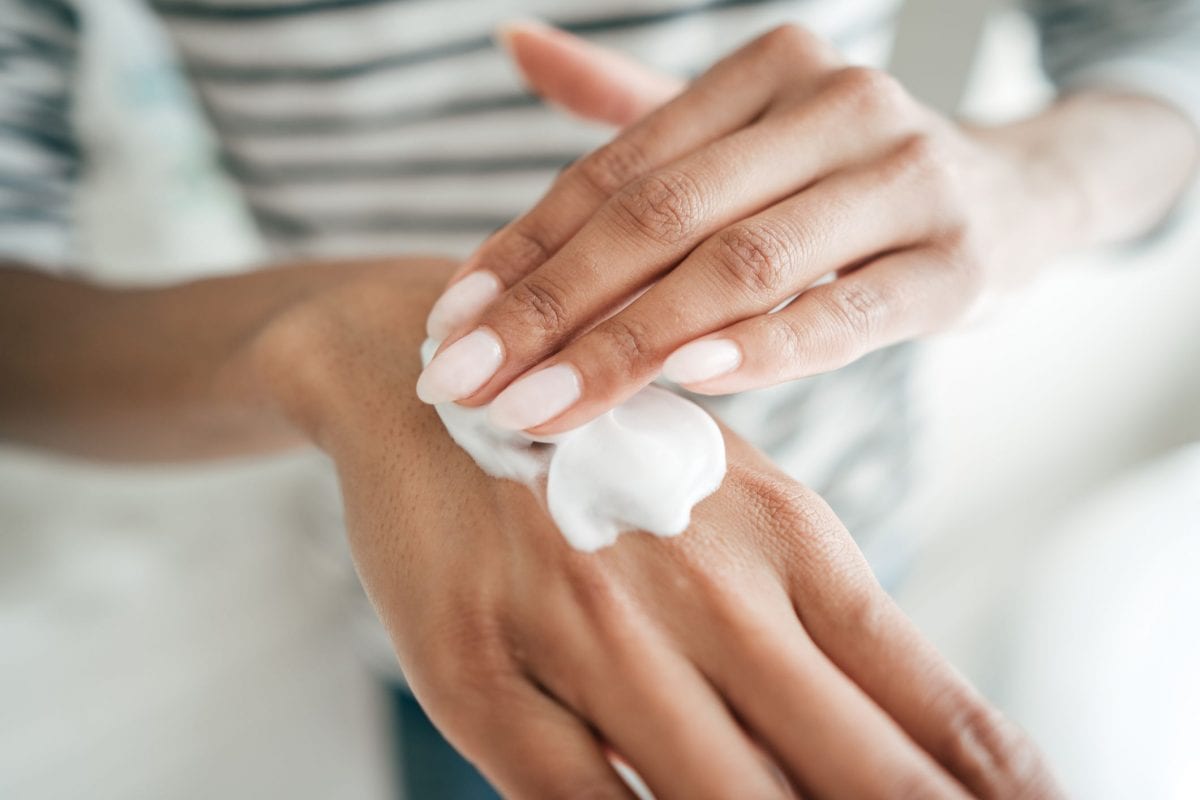Dealing with a case of dry and cracked cuticles? Read this for some tips on how to take care of your fingernails during the cold winter months. While everyone else excitedly counts down to Christmas and bundles up to build snowmen, you can’t help but grimace and sigh. You want to enjoy the “happiest time of the year,” but that’s challenging when you suffer from cracked and dry cuticles.
No matter how often you moisturize or wash your hands, your cuticles still flake, bleed, and sting during the cold winter months.
It’s time to heal.
And most importantly, it’s time to make your fingers manicure-ready once more.
So, here are five options to fix cracked and dry cuticles at home.
What Causes Cracked Cuticles?
Dry skin around the nails is the most common cause of cracked cuticles.
In addition to skin conditions (like eczema) and behavioral triggers (like nail-biting), cracked cuticles can also stem from:
- Nail polish remover
- Hand sanitizer
- Dirt
- Harsh chemicals (like cleaning products)
- Dry weather (low humidity, low moisture)
- Hand washing
However, not everyone who washes their hands frequently or handles dirt for a living will develop dry or cracked cuticles. Dehydrated, unmoisturized skin is the biggest risk factor.
5 Ways to Fix Cracked and Dry Cuticles
Here are a few ways to repair your fingernails:
1. Oils
One of the best ways to combat dry and cracked cuticles is to add a layer of natural, healing moisture.
In other words, oils.
Here’s a step-by-step guide for creating DIY cuticle oil at home:
- Thoroughly rinse out an old bottle of nail polish.
- Pour in a tablespoon of your favorite carrier oil (i.e., almond, avocado, coconut, olive, or sunflower).
- Use a pipette to squeeze in a few drops of vitamin E, lavender, and rosemary oils.
- Dip the end of a Q-Tip into the mixture and dab it onto your cracked cuticles.
- Reapply twice a day.
This oil combo can reduce inflammation, eliminate bacteria, strengthen the cuticles, and ignite the healing process — all in a few weeks!
Or, you can purchase pre-made cuticle oil if you’re not big on essential oils.
2. Hand Cream & Gloves
The issue with regular moisturizing creams is that they always wind up in the drain. The silky smoothness only lasts until the next time you shower or wash your hands.
You have two options:
- Reapply lotion dozens of times per day (hopefully, you stocked up).
- Apply hand cream and wear gloves at night time for eight hours of healing.
Option #2 is most realistic if you’re short on time and money and want quick results!
Here’s what you need to know about this alternative cuticle healing method:
- Invest in moisturizing hand cream or cuticle cream with skin-healing nutrients (like Burt’s Bees Lemon Butter Cuticle Cream).
- Rub a layer onto the back of your hands, cuticles, and nail beds.
- Put on a pair of moisturizing gloves, and go to bed.
- Rinse your hands in the morning.
- Repeat every night for a week.
The gel-lined gloves will keep the healing lotion from rubbing off onto your bed sheets or underneath your pillow as you sleep.
Most importantly, your cuticles will be softer and smoother, come morning!
3. Hand Soaks
Dry and cracked cuticles aren’t just a sight for sore eyes; they can also be distractingly painful as you try to work and sleep.
For immediate cuticle relief, try an olive oil hand soak.
Here’s how you can use extra virgin olive oil to soothe cracked and dry cuticles:
- Pour a few inches of olive oil into a flat bowl that’s wide enough to comfortably fit both hands.
- Dip your fingertips (or your entire hands) into the bowl.
- Allow your hands to soak for 5-15 minutes — be sure to carefully massage the oil into your cuticles for maximum results.
- Repeat once a week or as needed.
The benefits of olive oil soaks are two-fold. Not only will they soften your cuticles and ease the roughness, but they’ll also strengthen unusually brittle nails.
4. Stay Hydrated
The color, shape, texture, and strength of your fingernails can indicate the status of your overall health.
Dry and cracked cuticles don’t just indicate a lack of moisture. Peeling cuticles can also mean severe dehydration.
Fortunately, you can tackle dehydrated cuticles from two angles:
- Internally through water consumption (11.5-15.5 cups of water a day)
- Externally through hydrating hand creams (daily application)
On top of making an effort to stay hydrated, it also helps to cut back on things that can further strip your body of water, like:
- Alcohol
- Salty or fatty foods
- Caffeine
- Too much sun exposure
Proper hydration can also boost your mood, energy levels, and athletic performance. The cuticle benefits are just scraping the surface.
5. Nail Bite Treatments
Mildly dry cuticles could result from a dry, cold winter. But if there’s one thing that’ll make you wince in pain even more, it’s gnawing at your fingers until they bleed.
You’re not alone — up to 30% of people bite their nails habitually, even well into adulthood.
The best thing you can do as a chronic nail biter is to apply a bite deterrent to your fingertips.
This clear, bitter formula will help you quit this cuticle-destroying habit cold turkey, giving your cuticles time to return to their normal smoothness.
The longer you go without the biting, the less likely you are to relapse.
Conclusion
Like many conditions, adjusting your lifestyle to prevent dry and cracked cuticles can save you the hassle of treating the discomfort later.
If you’re prone to dry skin:
- Avoid touching harsh chemicals (use natural cleaning products instead of artificial ones).
- Begin a daily moisturizing routine before winter begins.
- Wear gloves whenever possible to protect your hands from the elements.
- Skip scorching showers, and use gentle body and hand soaps.
- Buy a humidifier to keep the air in your home from getting too dry.
Cracked, dry cuticles can put a damper on the joyous winter months, but not if you treat them early (or prevent them entirely)!
Author Bio
Adam Marshall is a freelance writer specializing in all things apartment organization, real estate, and college advice. He currently works with Grove at Huntsville to help them with their online marketing.








